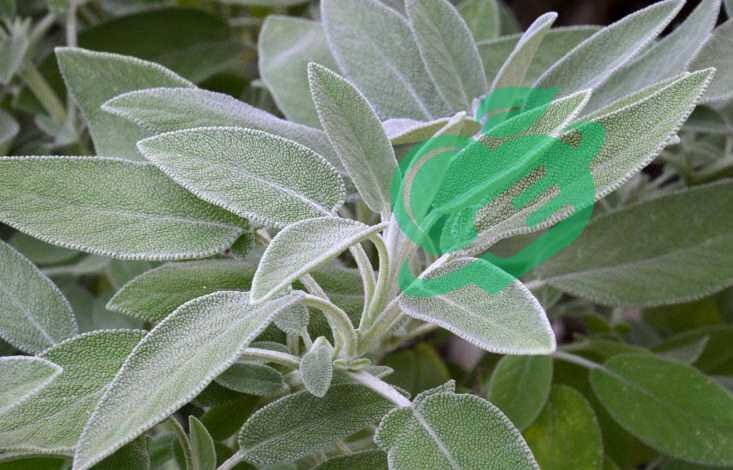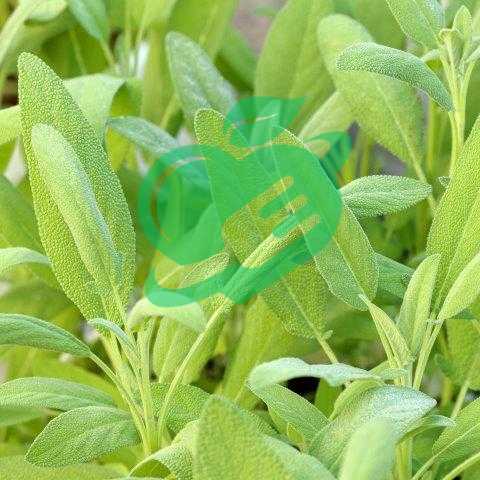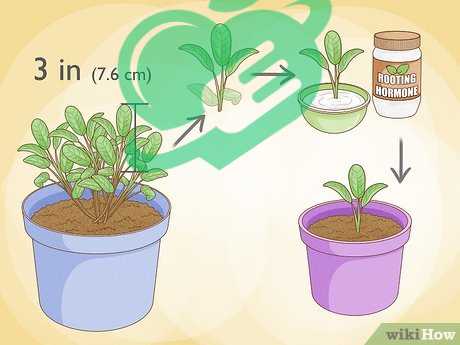Sage Leaves : Everything You Need to Know

Getting to Know Sage Leaves
Sage leaves, also known as Salvia officinalis, are an extraordinary herb loved for their uses in cooking and health. These fragrant leaves punch in flavor making them perfect for all kinds of meals from savory meat sauces to hearty veggie stews. Their unique aroma lifts the taste of any dish.
Here are some neat things about sage leaves:
- Looks: Dark green leaves with fine hairs that give them a slightly fuzzy feel.
- Taste: A strong but somewhat peppery flavor with herbal notes.
- Different Kinds: While garden sage is the most popular, you can also find varieties like purple sage and pineapple sage, each bringing its special flair.
The History of Sage
Sage has a rich history going way back to ancient times when it was much more than just a cooking herb.
- Back in Roman days, sage was seen as super healthy and was used in a bunch of herbal remedies.
- Native cultures thought of sage as sacred and used it in rituals, especially for purification during smudging.
This history not only shows how important sage has been in global cooking but also highlights its deep roots in culture and tradition.
Read also: Everything you care about dry skin.
Antioxidant Benefits
Sage leaves are full of strong antioxidants, which help fight off free radicals in the body. These free radicals can cause cell damage and lead to health problems. Adding sage to your meals can help neutralize these harmful guys.
- Important Antioxidants in Sage:
- Rosmarinic acid
- Carnosic acid
- Flavonoids
These compounds not only help your body stay healthy but also promote better skin by lowering oxidative stress.
Reducing Inflammation
Sage leaves also shine with their anti-inflammatory properties. Chronic inflammation is tied to some serious health issues like heart disease and arthritis.
- Cooking with sage regularly can:
- Help control inflammation
- Support joint health
People often notice less discomfort when they include sage in their meals, particularly if they have issues linked to inflammation.
Boosting Brain Power
Sage has been found to enhance brain function too. Some studies suggest that components in sage can improve memory and focus.
- A personal tip: Many cooking lovers enjoy a cup of sage tea before big events or exams to sharpen their focus and clarity.
Adding sage leaves to dishes or sipping on sage tea could help with your mental sharpness.

Cooking with Sage Leaves
Sage leaves bring a unique taste that can change how dishes taste. Their earthy flavor is slightly peppery and aromatic, making them perfect for hearty recipes.
- Great Flavor Combinations:
- Meats: Especially pork, chicken, and lamb
- Vegetables: Potatoes, squash, and green beans
- Grains: Like risottos and pasta
One of my favorite ways to use sage is in a simple brown butter sauce, where its flavors get richer and nuttier.
Cooking Techniques with Sage
There are many ways to use sage so its flavor shines through in your cooking.
- Infusing: Adding sage to oils or butter can create a fragrant base for dishes.
- Sautéing: Quickly cooking sage leaves in olive oil adds up their flavor and aroma.
- Braising: Using sage in slow-cooked meals enhances the overall taste.
Delicious Sage Recipes
Here are a few tasty recipes with sage leaves you should try:
- Sage and Brown Butter Pasta: A simple dish where crispy sage goes perfectly with the rich butter.
- Roasted Chicken with Sage: Seasoned with fresh sage, this chicken comes out flavorful and tender.
- Sage Potato Wedges: Crispy oven-roasted potatoes mixed with sage for a delicious twist on a classic side.
All these recipes show how sage can enhance flavors, making it a must-have herb in your cooking toolkit.
Read also: How to Treat and Soothe Nettle Sting.

How to Plant Sage
Growing sage at home is super rewarding and gives you fresh herbs for your meals while adding beauty to your garden. Sage grows best in well-drained soil and loves full sun, so picking the right spot is important.
These tips will help you plant sage:
- Soil Prep: Make sure the soil is slightly alkaline with a pH between 6.0 and 7.0. Mixing in some compost can help.
- Spacing: When planting more than one sage plant, give them plenty of space, about 18 inches apart, so they can grow well.
- Watering: Even though sage can tolerate dry spells, it’s important to water young plants regularly until they’re established. After that, let the soil dry out between waterings.
I remember when I first planted sage; watching those tiny seeds grow into green leaves was super satisfying.
How to Harvest Sage
When it comes to picking sage, timing is really important. The best time to cut sage leaves is in the morning after the dew has dried because that’s when the oils are richest.
- Harvesting Tips:
- Use scissors to snip off the top leaves to encourage more growth.
- Don’t take more than a third of the plant at once to keep it healthy.
Fresh sage right after you harvest it can amp up the flavor in your cooking. Whether you’re a gardening pro or just starting, growing and harvesting sage can be fun and rewarding.
Read also: Brain Freeze Buster: Remedies for Instant Relief.

Drying Sage
Drying sage leaves is a great way to keep their flavors around for longer. This method keeps the special taste and aroma of sage that we all love in cooking.
Here’s a simple way to dry sage:
- Harvest Fresh Leaves: Pick leaves from healthy plants, ideally on a sunny morning.
- Wash and Dry: Gently rinse the leaves and then pat them dry with a clean towel.
- Drying Methods:
- Air Drying: Tie a few stems together and hang them upside down in a cool dark place. After about a week, they should be dry.
- Oven Drying: Spread the leaves on a baking sheet and dry them on the oven’s lowest setting for 1-2 hours.
I always keep dried sage handy for quick meals; it adds an instant flavor boost to sauces and soups.
Freezing Sage
Freezing is another smart way to keep sage’s vibrant flavor without losing quality.
- Freezing Tips:
- Chop and Freeze: Chop fresh sage leaves and put them in an ice cube tray. Fill with olive oil or water, and freeze.
- Pack and Seal: After they’re frozen, transfer sage cubes into airtight bags for easy use later.
This method has saved me so many times during busy weeks when I need a quick flavor boost. Whether you prefer dried or frozen sage, both methods help you enjoy this beloved herb year-round.
Read also: Damiana Leaves Benefits You Need to Know.
Other Uses for Sage Leaves
Medicinal Uses
Sage leaves have been used for a long time in traditional medicine. Their healing properties have been recognized for centuries and are still relevant today.
Here are some common medicinal uses for sage:
- Digestive Help: Sage is often used to soothe digestive problems like bloating and indigestion. A warm cup of sage tea can be great after a heavy meal.
- Fighting Germs: Sage has compounds that can help fight harmful bacteria, making it a choice for mouth rinses and throat sprays.
- Hormonal Balance: Sage is being looked at for its potential to help relieve menopausal symptoms like hot flashes.
From my own experience, sipping sage tea in the winter has helped keep me cozy and healthy.
Cultural and Spiritual Importance
Sage has also played a big role culturally and spiritually throughout history. For many indigenous groups, sage is seen as a sacred plant.
- Smudging: Burning dried sage, known as smudging, is a way to clear spaces of bad vibes and promote healing.
- Cultural Traditions: Sage is often used in ceremonies and celebrations as a symbol of wisdom and protection.
I’ve taken part in some smudging rituals with friends and felt really connected and at peace. Whether it’s for health or spiritual reasons, sage plays a special role in our lives.
Read also: Unlocking the Nutritional Value of Guava Leaves for Well-being.

Frequently Asked Questions
Is it okay to eat raw sage leaves?
The distinctive grey-green color is so recognizable that an entire color is named after it. When raw, sage has a soft, sponge-like texture, making it safe to eat, but it tastes better when cooked. 1.
Is sage leaves a mint?
Did you know that coleus, sage, and rosemary all belong to the mint family (Lamiaceae)? This plant family includes numerous culinary herbs. Members of the mint family are typically fragrant, feature square stems, and have leaves arranged opposite each other. 2.
Can I drink sage leaves everyday?
To be cautious, it’s advised to restrict sage tea intake to 3 to 6 cups per day. If you are worried about thujone found in common sage, you can opt for Spanish sage (Salvia lavandulaefolia) instead, as it does not contain thujone. 3
What are 5 benefits of burning sage leaves?
Besides dispersing negative energy, boosting mood, and enhancing intuition, burning sage may also enhance memory and concentration. A review of studies from 2016 highlighted that there is encouraging evidence regarding the cognitive benefits of Salvia, which may have an impact on conditions like dementia and Alzheimer’s disease. 4.
What does sage leaves do for a woman?
Common sage has historically been utilized to alleviate symptoms of menopause. It is thought that the compounds found in sage possess estrogen-like characteristics, enabling them to attach to specific receptors in the brain, which may enhance memory and alleviate hot flashes and excessive sweating. 4.
Precautions and Side Effects
While sage leaves have plenty of health perks, it’s good to be aware that some folks may have allergic reactions to them, though this is pretty rare.
Signs you might be allergic include:
- Skin Issues: Rashes or hives after touching or eating sage.
- Breathing Problems: Trouble breathing or wheezing, especially if sage is burned.
- Stomach Problems: Feeling sick or having an upset stomach after eating sage.
In my experience, trying a new herbal blend with sage once gave me a bit of an upset tummy, reminding me to always ease into new herbs cautiously.
Possible Drug Interactions
Sage might interact with certain medications as well. This is particularly important for people taking:
- Blood Thinners: Sage could enhance the effects of these meds, raising bleeding risks.
- Hormonal Medications: Because of its estrogen-like properties, sage might mess with hormone replacement therapy or birth control pills.
Always check with a healthcare professional before adding sage to your routine, especially if you’re on medication. Understanding potential side effects helps you enjoy the advantages of sage safely.
Wrapping Up on Sage Benefits
As we’ve discussed, sage leaves are packed with benefits that go far beyond just cooking. From being rich in antioxidants and reducing inflammation to boosting brain function, sage is truly a powerhouse. Its various uses in cooking, health, and spiritual practices make it a treasured herb in so many areas of life.
Key points include:
- Health Benefits: Antioxidants, reduced inflammation, and better brain function.
- Culinary Flexibility: A fantastic flavor that fits well with many dishes.
- Easy to Grow: Sage is a low-maintenance herb that can thrive in all sorts of conditions.
Because your health is the most valuable thing you have and the most precious thing we care about, we always recommend that you consult your specialist doctor in everything related to your health and daily life. Everything we provide here is for awareness purposes only and does not replace consulting a doctor. Every person has a unique condition that deserves special care, and we are here by your side, working passionately to provide the information you need. Always follow us, because we write for you with love and sincerity to remain a source that inspires you with hope and supports you on your journey towards a better life.
- allrecipes ((↩))
- usbg ((↩))
- healthline ((↩))
- healthline ((↩))((↩))



